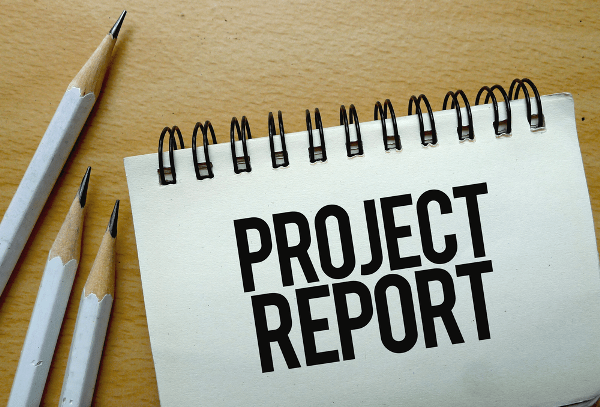Project Report for MSME Loan
Need a project report for MSME loan application? We can help you create a clear, detailed report that boosts your chances of approval. Get in touch today and take the first step towards securing your loan!
Request For Call Back
- All India Service
- Easy OnlineProcess
- 24*7 Hours Customer Support
Project Report for MSME Loan: Introduction
Starting or growing a small business can be a challenging yet exciting journey. One of the key steps in this process is securing the necessary funding. If you’re looking to apply for a loan under the Micro, Small, and Medium Enterprises (MSME) scheme, one of the most important documents you’ll need is a Project Report.
A Project Report for an MSME loan is not just a formality – it’s an essential tool that helps lenders understand your business, its potential, and the risks involved. In this guide, we’ll break down everything you need to know about creating a project report for your MSME loan, including why it’s necessary, what it should include, and how we can help.
What is a Project Report for MSME Loan?
A Project Report for MSME Loan is a detailed document that outlines your business plan, financial projections, and other essential information. It gives the lender a clear picture of your business idea, the market opportunity, your financial strategy, and how you plan to use the loan funds.
This report acts as a bridge between your business and the lender. It helps the lender evaluate your business’ credibility, growth potential, and the likelihood of your ability to repay the loan. Essentially, the report is your chance to make a strong case for why you deserve financial assistance.
Why Do You Need a Project Report for MSME?
Having a solid project report is crucial for securing your MSME loan. Here are a few reasons why this document is so important:
- Helps Gain Trust: Lenders need to be confident that your business is sound and that you can repay the loan. A well-written project report establishes your business as trustworthy and financially viable.
- Demonstrates Business Knowledge: Creating a project report forces you to think through every detail of your business – from market analysis to financial forecasting. It shows that you understand the nuances of running your business.
- Clarifies Loan Purpose: The project report explains how you plan to use the loan and why the funds are essential for business growth. It lets lenders know exactly what their money will be used for.
- Improves Loan Approval Chances: A well-crafted project report can significantly improve your chances of loan approval, as it addresses potential concerns the lender might have about your business.
What Should Be Included in Your Project Report?
A Project Report for MSME Loan is a vital document for securing financial support from banks or financial institutions. It outlines the business idea, financial requirements, market potential, and operational plans, providing a clear roadmap for the growth of the micro, small, or medium enterprise. Here are the key components of such a report:
1. Project Overview
A brief introduction to the MSME, including the business concept, objectives, products or services offered, and the target market. It highlights the unique selling points and growth potential of the enterprise.
2. Business Owner Details
Information about the entrepreneur(s), including their background, qualifications, experience in the industry, and roles within the business. This helps build credibility with lenders.
3. Executive Summary
A concise summary of the entire project report, covering the business idea, market potential, financial requirements, expected outcomes, and growth prospects.
4. Business Description
Detailed information about the business, including its nature, operations, products/services, target audience, and competitive advantage.
5. Market Analysis
An assessment of the market environment, including customer demand, industry trends, competition, and growth opportunities. It also covers market segmentation and target demographics.
6. Operational Plan
Describes the day-to-day operations, including the production process, technology used, resource requirements, supply chain management, and staffing plans.
7. SWOT Analysis
A strategic analysis identifying the business’s Strengths, Weaknesses, Opportunities, and Threats to assess internal capabilities and external market conditions.
8. Fixed Capital Investment
Details the funds required for long-term assets like machinery, equipment, land, and infrastructure needed to set up and run the business.
9. Working Capital
The funds needed for daily operations, including inventory, salaries, rent, utilities, and other operational expenses.
10. Summary of Project Costs
A comprehensive breakdown of all costs involved in starting and operating the MSME, including fixed and variable costs.
11. Projected Depreciation Schedule
Estimates the depreciation of assets over time, helping to understand their declining value and its impact on financial statements.
12. Cost Statement
A detailed list of all operational costs, categorized by function (e.g., production, marketing, administration).
13. Projected Profitability Statement
Financial projections showing expected revenues, costs, and profits over a period, usually 3-5 years.
14. Projected Cash Flow Statement
Forecasts the inflow and outflow of cash, helping assess the business’s ability to meet financial obligations.
15. Projected Balance Sheet
A snapshot of the MSME’s financial health, detailing assets, liabilities, and equity at a given point in time.
16. Loan Repayment Schedule
A plan outlining how the loan will be repaid, including principal amounts, interest rates, and repayment timelines.
17. Computation of Maximum Permissible Bank Finance (MPBF)
Calculates the maximum loan amount the bank is willing to provide based on the project’s financial structure and working capital.
18. Debt-Service Coverage Ratio (DSCR)
Measures the ability of the MSME to cover its debt obligations with its net operating income.
19. Ratio Analysis
Evaluates financial ratios like profitability, liquidity, and efficiency to assess the business’s financial health.
20. Break-Even Point Analysis
Determines the sales volume needed to cover all costs, beyond which the business starts generating a profit.
21. Feasibility Analysis
Evaluates the viability of the project through financial projections, market conditions, and operational strategies.
22. Assumptions
Lists assumptions made during report preparation, such as expected market growth, cost trends, and financial conditions.
23. Conclusion
Summarizes the key findings of the report, affirming the business’s viability, profitability, and potential for growth.
MSME Project Report Fees
Detailed Project Report
(For 3 Year)
- Detailed Project Report for 3 year
Detailed Project Report
(For 5 Year)
- Detailed Project Report for 5 year
Detailed Project Report
(For 7 Year)
- Detailed Project Report for 7 year
Documents Require for Project Report
- Detail About Company - Name, Address and Activity etc
- Detail about proprietor/ Partners/Directors
- Detail about loan - Type of loan, Interest Rate, Repayment Schedule etc
- Projected Yearly Sale
- Projected Profit Margin
- Machinery Detail
- Projected Raw material detail
- Projected salary detail of employee
- Projected monthly Expenses Detail












